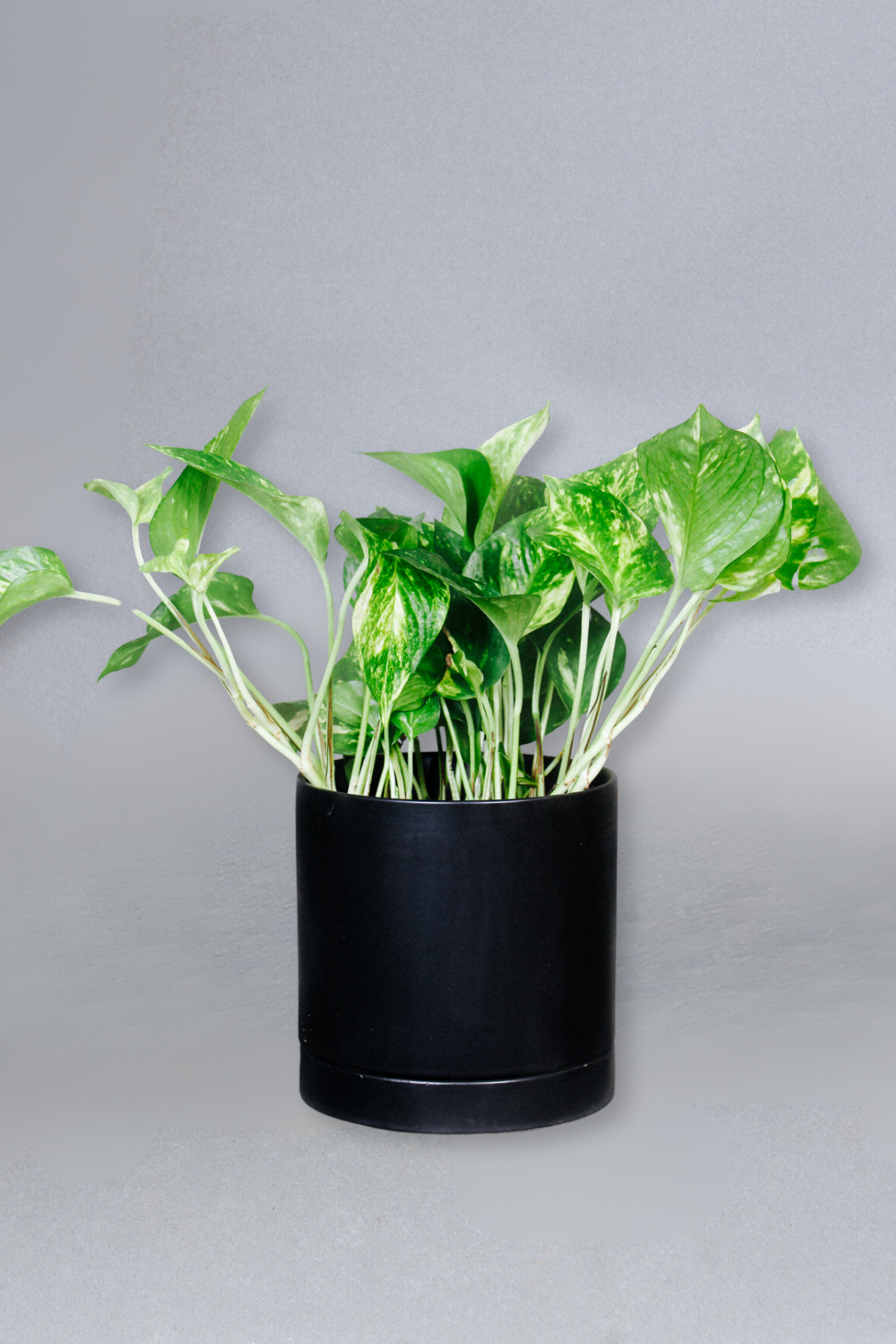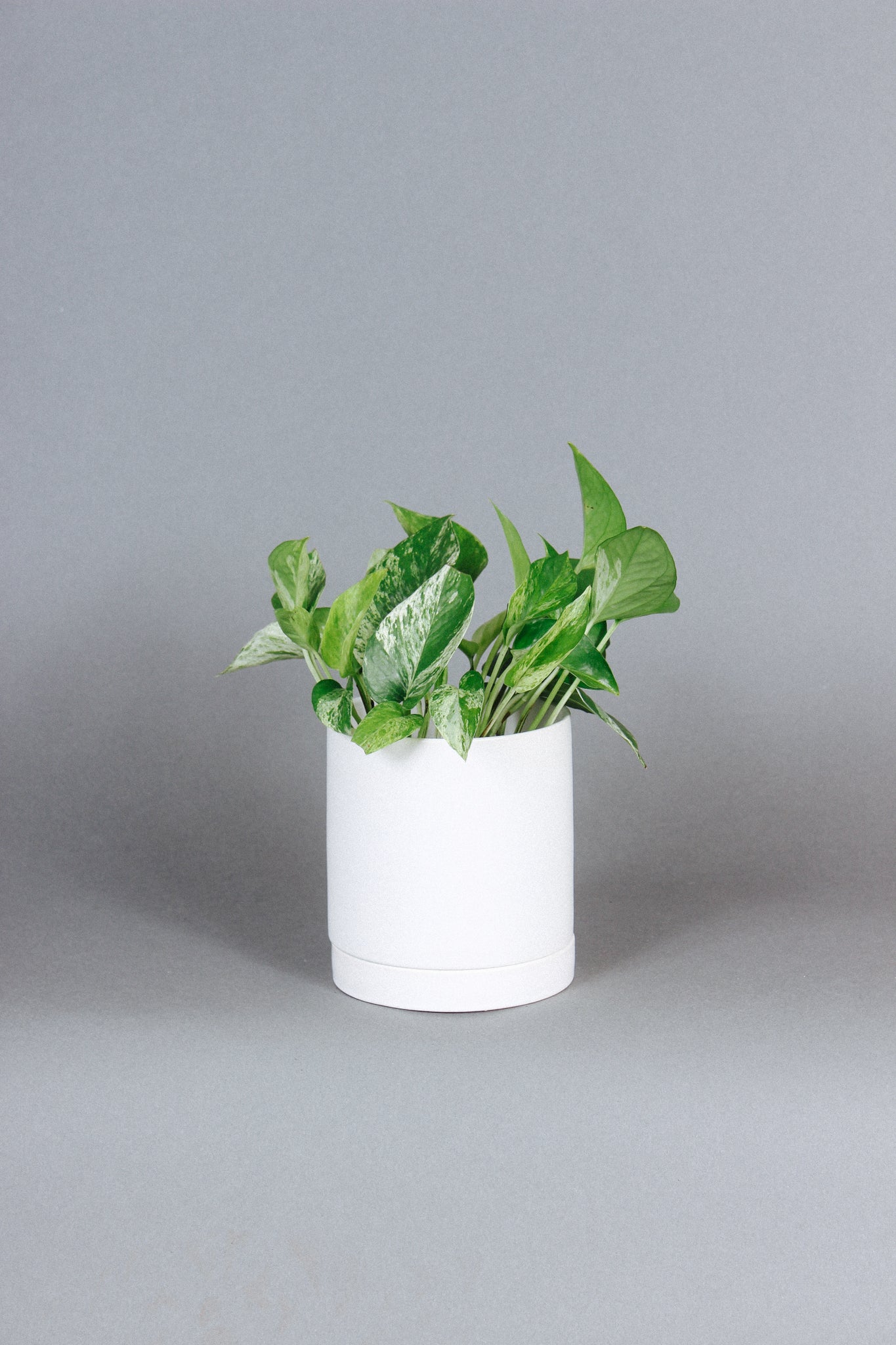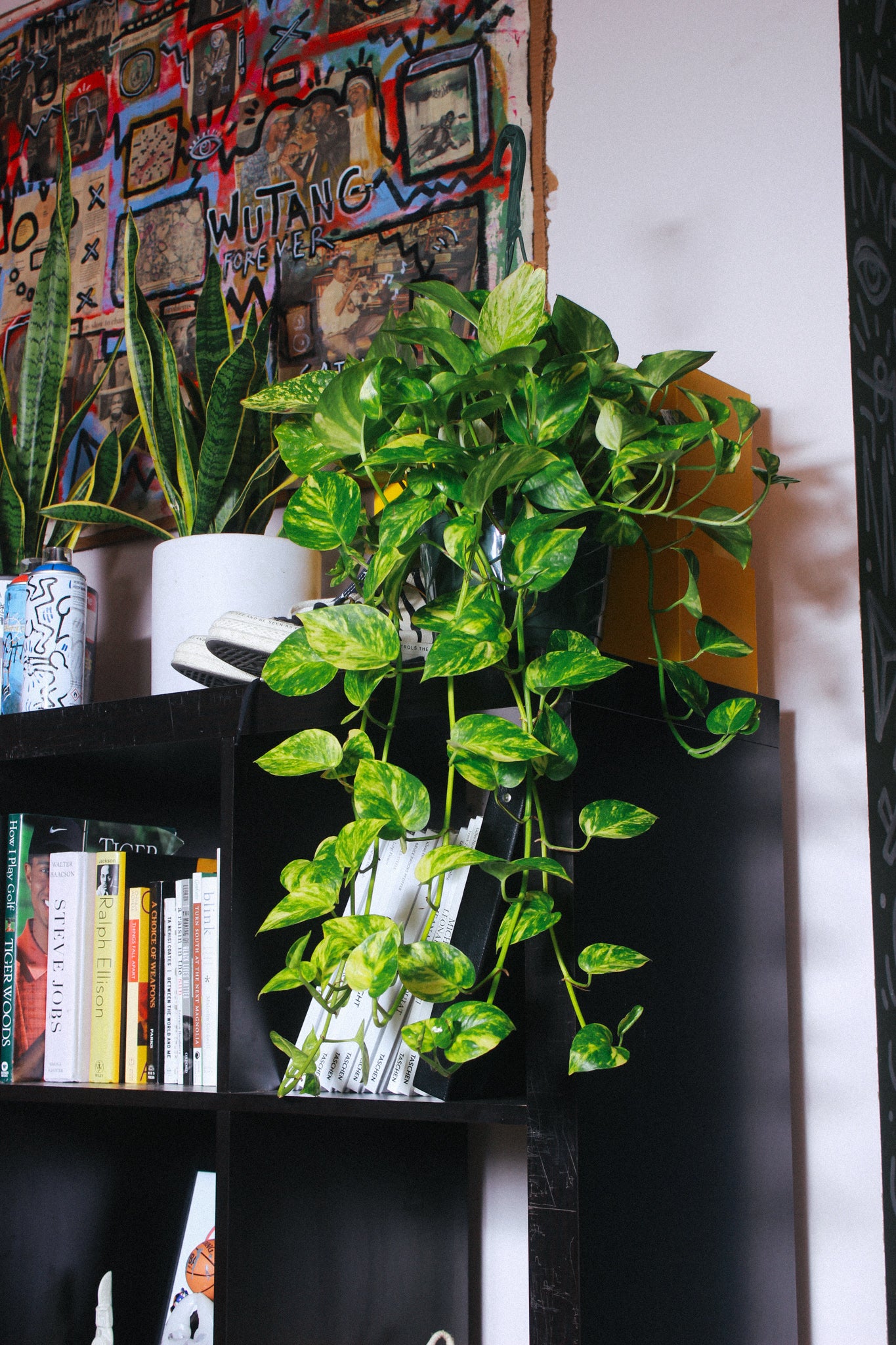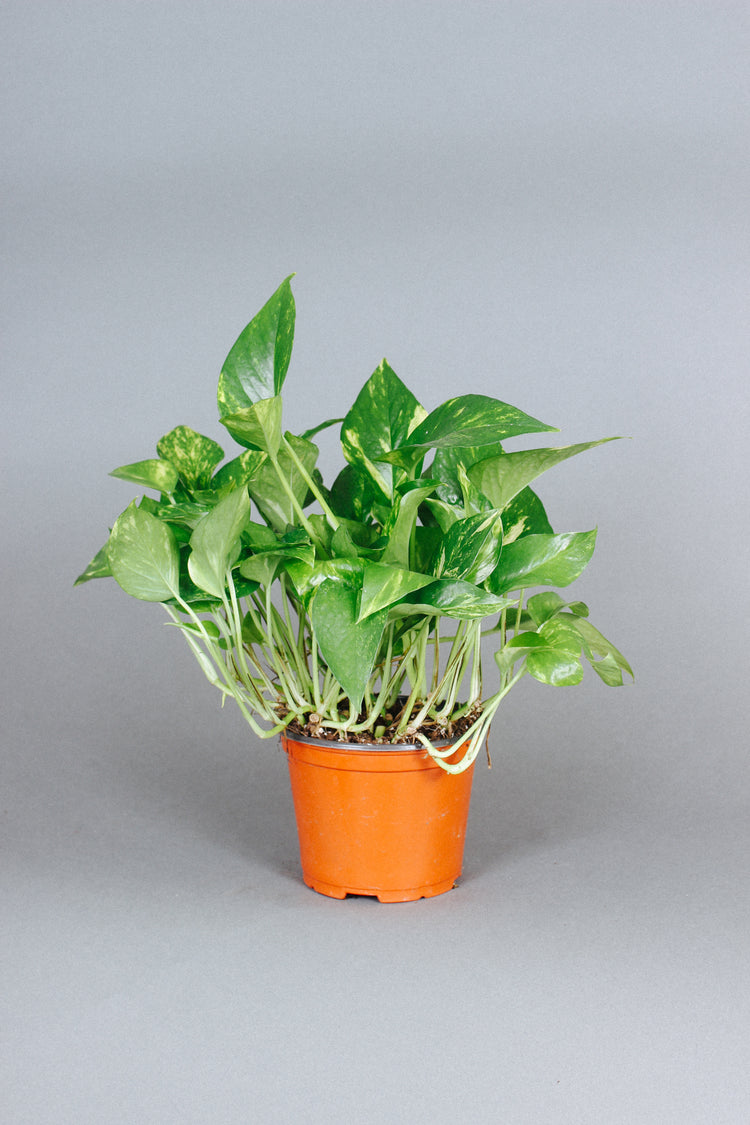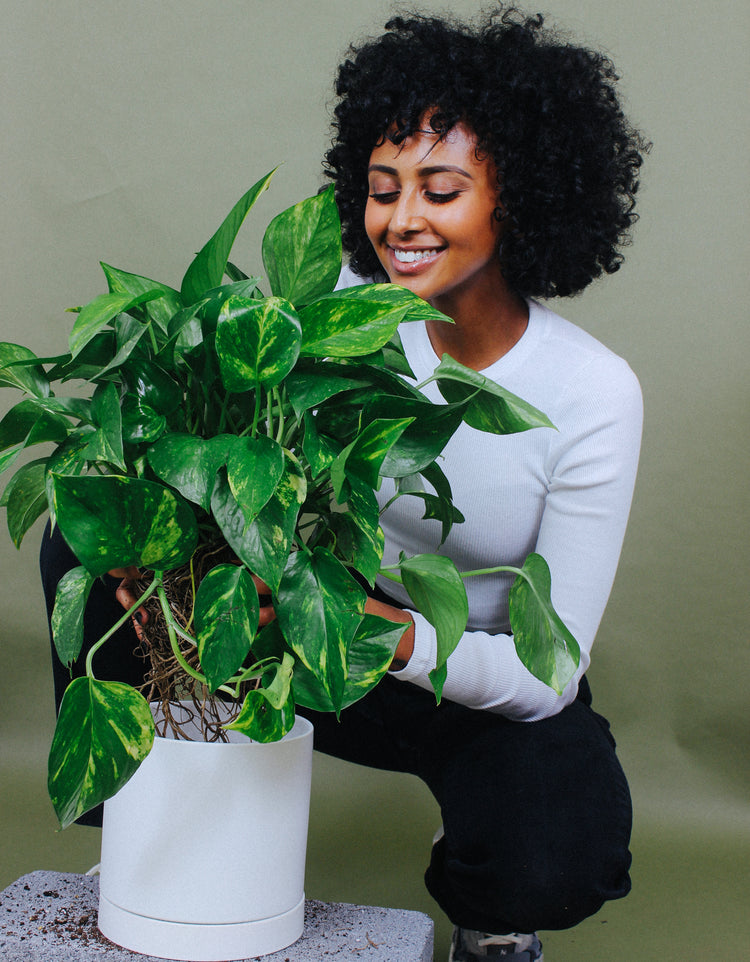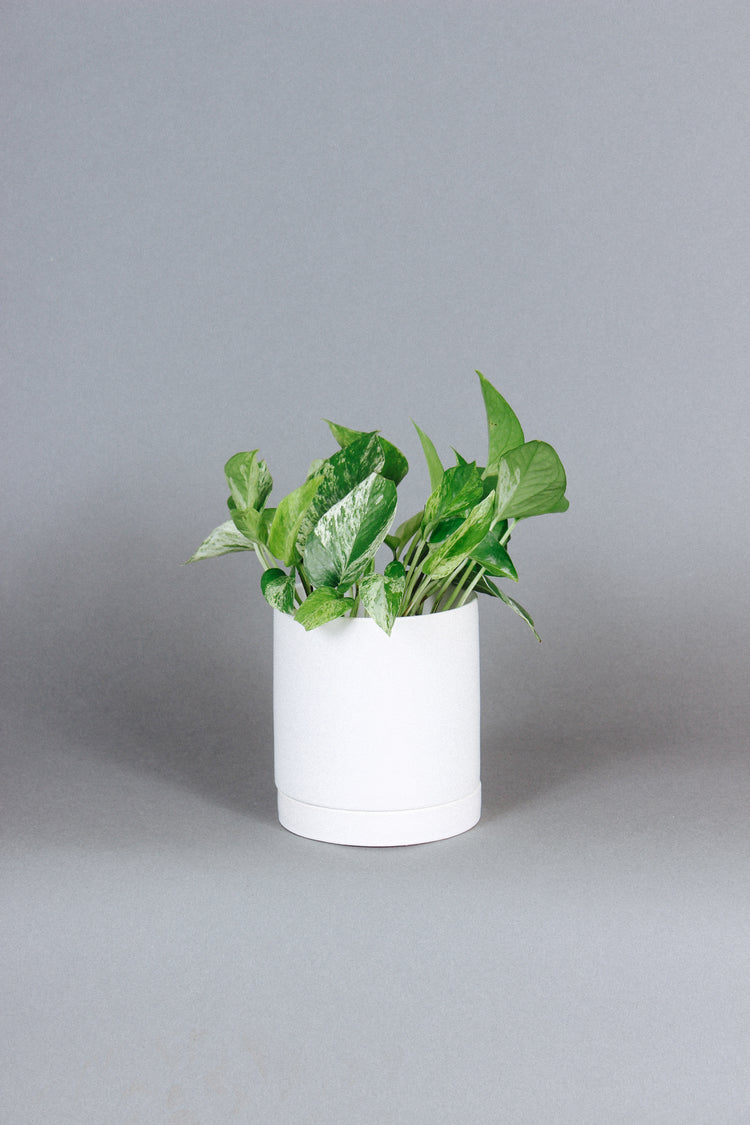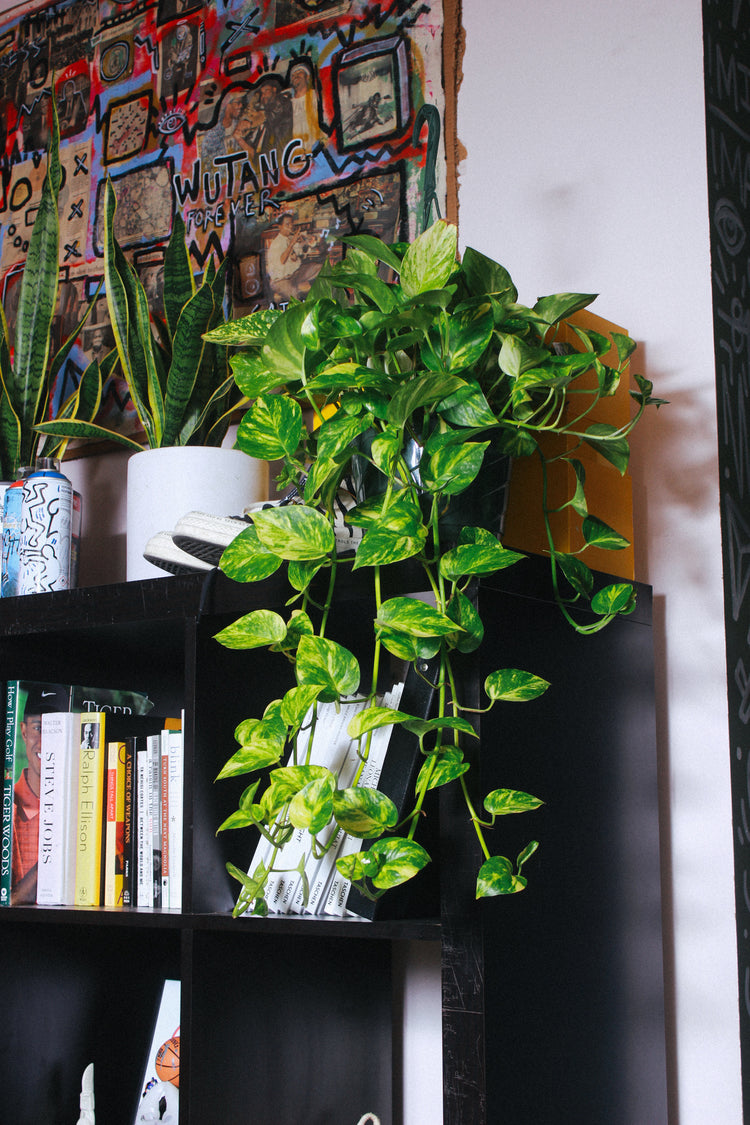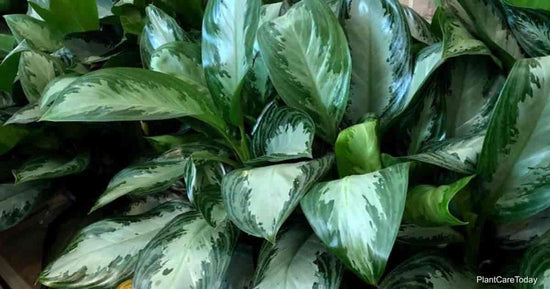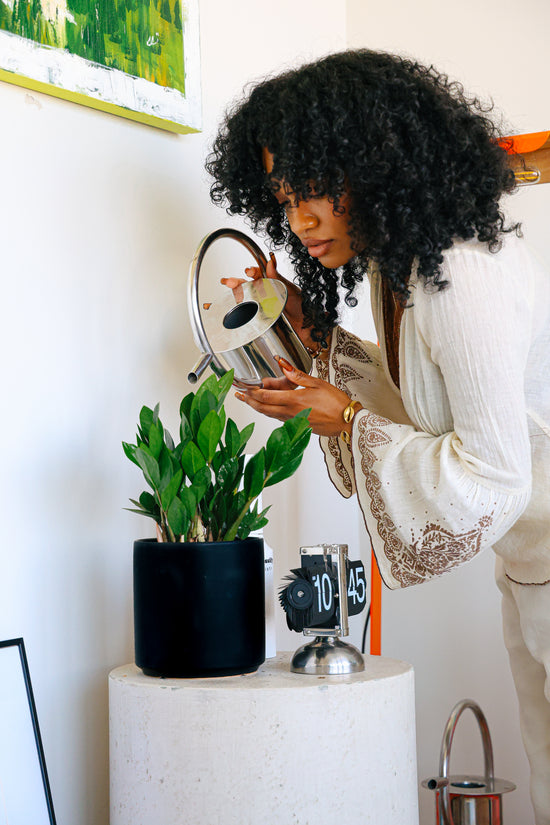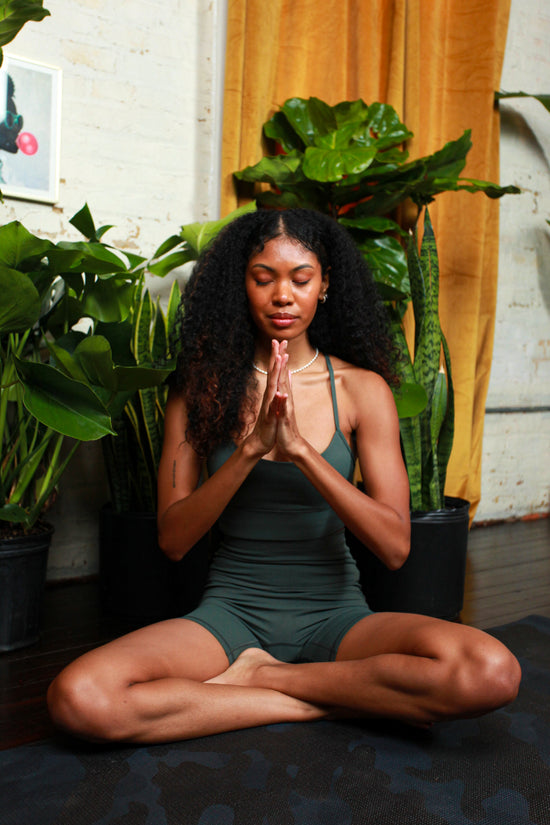Bringing a plant home is a big deal. Not only is the home a sanctuary, it is often all our plants will ever know. Finding harmony between design, lifestyle, and care requirements may take practice but it will pay off with abundant rewards in health, mood, and aesthetic. To set you up for success, we've answered the most popular questions about planning for plants in your home.
PREPARING YOUR HOME AND PLANTS FOR THE BEST CARE
Q: HOW DO I KNOW WHAT PLANT WILL BE BEST IN MY HOME?
A: We’re glad you asked! We offer a personalized quiz to suggest a plant that would suit your lifestyle + home. There are a few other things to consider:
- The brightness and direction of your windows.
- Research plants before committing to understand what each requires.
- Trial and error is a normal part of plant care! Don’t be discouraged to try something new.
- We’re committed to supporting you along your plant care journey. Reach out to us with care questions at any time.
Q: HOW DO I KNOW WHAT KIND OF LIGHT MY HOME HAS?
A: Plants require anything from low to bright light and indirect or direct light. Confirm the direction your windows face by downloading the compass app on your phone, or follow where the sun rises (east) and sets (west).
Key Pointers:
- North-facing windows tend to receive the least amount of light
- East-facing windows offer bright light, both direct and indirect
- South-facing windows tend to provide ample light throughout the day
- West-facing, sun-setting windows tend to be bright and direct
- This varies based on your location in the world. We have a quick breakdown of light types here!
Q: I HAVE A LOW LIGHT HOME. WHAT PLANTS WOULD BE BEST FOR ME?
A: While plants will need some amount of light to survive, we offer plenty of options that suit low-light homes. You can also consider purchasing plant grow lights to have a greater range of brightness. Plants that do well in low lighting are:
Q: WHAT DO I NEED KNOW ABOUT REPOTTING MY PLANT?
A: Great question! The basics on repotting your plant are:
- Spring or summertime is best
- Use a planter of the same size or up to 2” larger
- Research what soil type is best for the plant
- Water immediately after + do not fertilize for 6 weeks
- Read more on repotting your plant here!
Q: IS THE TEMPERATURE IN MY HOME OKAY FOR PLANTS?
A: In most cases, if your indoor temperature is comfortable for you, it is also comfortable for your plants. Temperatures between 65º-85º are suitable for most plants we welcome inside. For those that have desert origins, the range is wider and the tolerance is higher. In general, plants prefer stable environments and don't handle fluctuating temperatures well.
Q: CAN I MOVE MY PLANT OUTSIDE?
A: While your plants would love fresh air, relocating outdoors exposes them to elements out of your control and requires careful planning and attention. Consider the following:
- Outdoor elements - understand your plant's needs and carefully select the best spot outside for it. Will it need partial shade, protection from wind, or extra humidity?
- Temperature changes - what time of year do temperatures drop and rise? Review the question above regarding safe temperatures for plants.
- Transition stress - indoor plants should be slowly transitioned outdoors so they can adjust without shock to their system. Start with a few hours and gradually increase their time outside. When it's time to bring them back in, slowly transition as well.
- Pests - always check your plant for pests before bringing them back indoors. Thoroughly wipe, spray, or hose them down to prevent pests from spreading to other plants.
Q: I HAVE PETS IN MY HOME. WILL THEY BE SAFE WITH PLANTS?
A: Yes! There are plenty of pet-safe plants that pose no harm to your beloved animals. Plus, with a few tricks, you can broaden your collection without worrying about your pet(s) being overly curious.
Q: HOW DO I PACK MY PLANTS TO MOVE HOMES WITH ME?
A: With care, you can safely pack your plants to relocate homes, whether down the street or across the country. Consider gifting fragile plants to a loved one if you're worried they won't make it. For those going into the new chapter with you, prepare with the following:
Before:
- Avoid repotting or any other big changes ahead of your trip.
- Prune dead or damaged leaves (no more than 10-20% of the plant) and water a week or a few days prior.
- Top off exposed soil with shavings or moss to prevent dirt from falling out.
- Plant velcro and kraft paper are handy for wrapping and protecting fragile leaves/stems (gently wrapped and tucked upright).
During:
- Large plants may require transport in a vehicle big enough for it to lie on its side.
- Do your best to keep plants out of direct light, excessive heat, and intense A/C.
- Try not to transport them in enclosed areas (like a trunk or back of a U-Haul) for longer than necessary.
- If you will be making multiple trips, consider moving the plants first or last so there are minimal delays and risk of injury.
- If your trip will be overnight, bring plants indoors for the night.
After:
- Our blog "Care Steps After Receiving Plants in The Mail" has useful tips for post-transport care.
- Provide each plant with the environment they were previously familiar with.
- Remove any yellow or damaged leaves as they come. It can take plants a few days or weeks to fully settle after the moving process.
------
We love to see plants thriving in your home! Snap a photo and don't forget to tag us @groun.ded!



